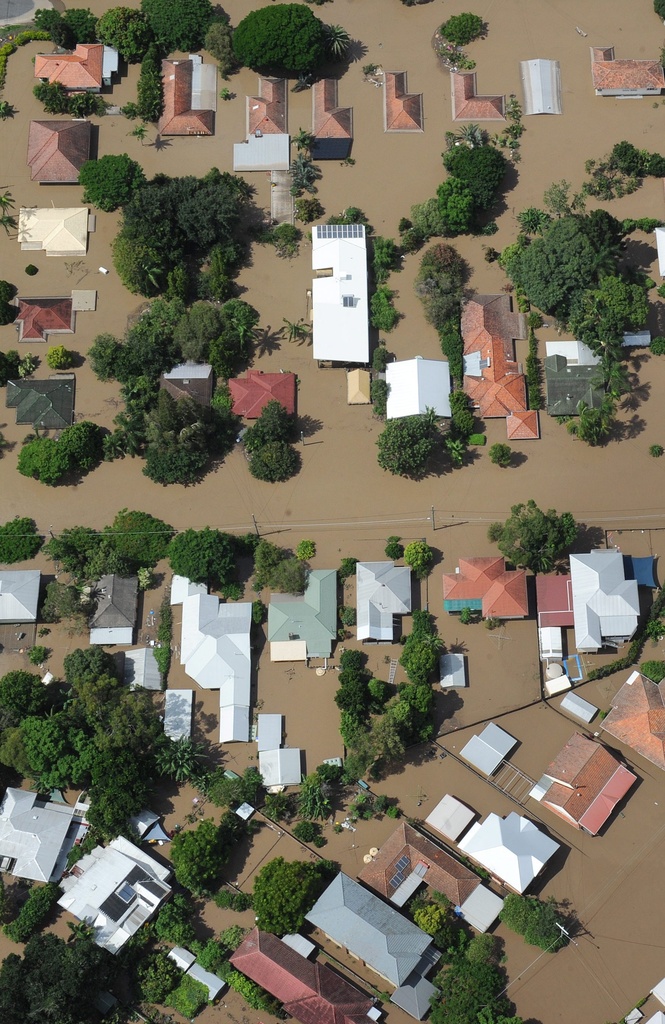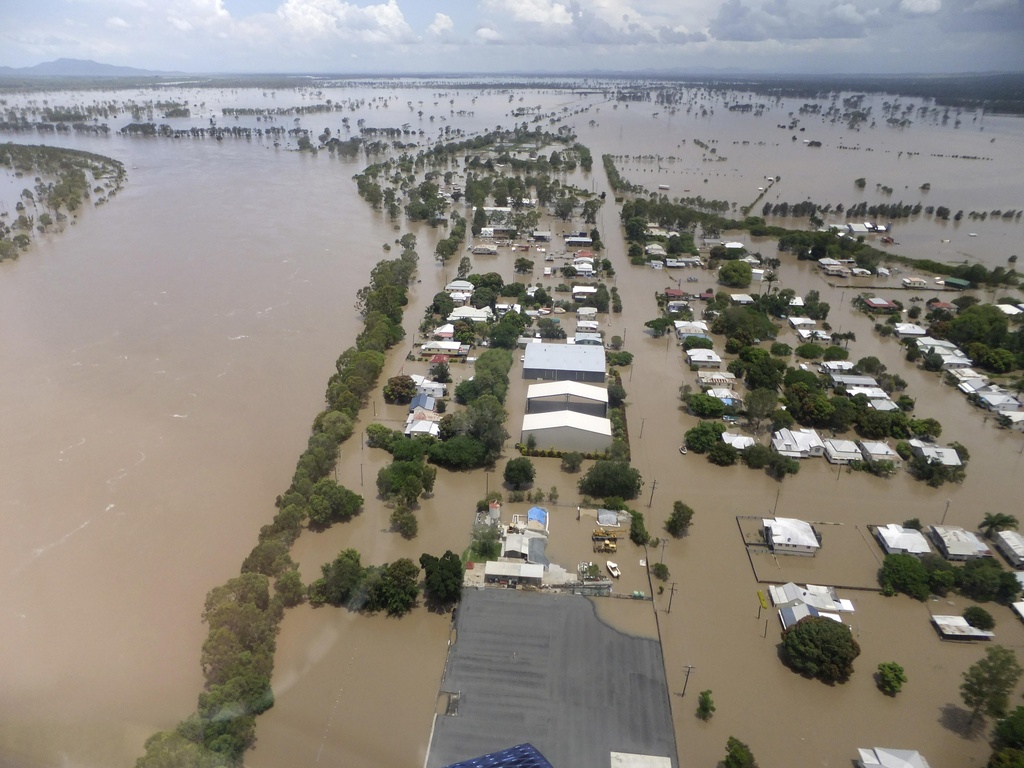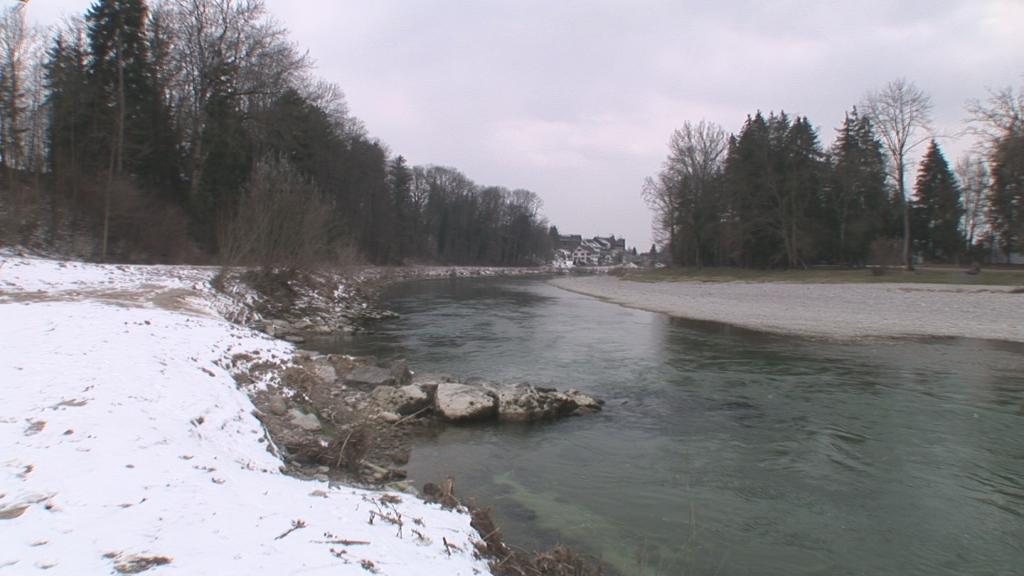“Zero-risk society doesn’t exist for floods”

The interaction of nature and humans – people living too close to the river – is a reason why floods, such as Brisbane’s, cause so much damage, an expert says.
Paolo Burlando, a professor of hydrology and water resource management at the Federal Institute of Technology Zurich, says there will always be some flooding risk but mitigation and prevention measures are possible.
Queensland Premier Anna Bligh has said that the Australian state has witnessed the worst natural disaster in its history and that rebuilding would be a task of “post-war proportions”.
Flood waters in the state capital Brisbane have left thousands of homes submerged and around 15 people have died this week. On Thursday it was reported that the waters were starting to recede.
swissinfo.ch: These aren’t the first floods to hit the area – Brisbane was badly hit in 1974 – but they are the most deadly. Why is this flooding so bad?
Paolo Burlando: All flooding is bad for people and infrastructures but it’s part of nature. It’s the interaction between nature and human activities that causes all this damage.
There are Australian Bureau of Meteorology graphs that show the occurrence of floods from 1840. And if you look at the key they provide – major, moderate and minor – there were far more floods that exceeded “major” before 1900. The only recent one that exceeded that threshold was in 1974.
The reason that it’s so dramatic today is that the occupation of land and the interaction of man with rivers has increased – people are getting closer and closer to rivers. For instance, if you look at pictures of Brisbane, you see that the river is meandering across the town. A meandering river means there is a gentle slope and the river can change its course during a flood. Now, if its course is occupied by buildings, there’ll be damage.
swissinfo.ch: Are these floods due to an unusually strong La Nina weather system?
P.B.: It seems it’s a combination of three facts: it’s not only La Nina, but it’s a cyclone plus the establishment of an unusually elongated low pressure field and La Nina. This combination seems to have brought this very unusual long-lasting and heavy rainfall. In December 2010 there was about four times the usual amount of rain across the entire region.
swissinfo.ch: Some scientists have said climate change has probably intensified the monsoon rains that triggered the floods. What role has climate change played? Or is it too early to say?
P.B.: On the basis of the data we have it’s probably too early. We can’t say whether this is already climate change. But if we believe the climate model results that are available from the many experiments carried out by climate research institutes, we can argue that in the future, extremes like this one may become less unusual.
swissinfo.ch: There are several problems: contaminated water; food and water shortages; no electricity. In the bigger picture exports have been hit. Regarding water source management, what should the authorities be doing?
P.B.: In the emergency period the only solution is to supply the basic needs: potable water in bottles and electricity generators for places like hospitals, and manage the most serious threatens for human lives and infrastructures.
In the long term, prevention can occur through what is called integrated water sources management, which is a sort of change of paradigm that has taken place in recent years in some locations around the world. It means you don’t manage water only for instance for water supply or for agriculture or for floods, but you look at the entire picture. So flood protection becomes one element of water resources management like irrigation and water supply. You look at all these elements together and try to set up a concept for managing water at the river basin scale, so that damage can be minimised.
The zero-risk society doesn’t exist, also with respect to floods. But you can mitigate damage and you can also prevent floods with structural and non-structural (e.g. administrative) measures, for instance you can say that if an area is subject to severe flooding once a century on average, you can’t build infrastructure there like hospitals, police stations or jails. Flood warning systems are also very important in this respect.
swissinfo.ch: Do dams work?
P.B.: Locally you can build dams. After the flood in 1974 upstream of Brisbane they built the Wivenhoe dam and to some extent it worked, but the amount of water this time seems to be much, much bigger than they could design for.
And of course until you experience the next big flood, even the most sophisticated design techniques rely on data that you observed in the past. As the famous Danish physicist Niels Bohr said: “Prediction is very difficult, especially if it’s about the future”.
Burlando is professor of hydrology and water resource management at the ETHZ’s Institute of Environmental Engineering.
Among his research interests are flood analysis and estimation, flood forecasting, water-related natural hazards, and global change and its impact on hydrology and water resources.
He has been involved in many national and international collaborative projects with leading and co-leading roles.
Swiss tennis star Roger Federer and world number one Rafael Nadal will play an exhibition match on Sunday ahead of the Australian Open to raise funds for the victims of the Queensland flooding.
Federer, Nadal, Novak Djokovic and Kim Clijsters will join Lleyton Hewitt in a “Rally for Relief” match at Rod Laver Arena. Also participating will be Sam Stosur and retired star Pat Rafter, who both come Queensland.
Federer, Nadal and Clijsters took part in a similar fundraising match last year, that time following the earthquake in Haiti.

In compliance with the JTI standards
More: SWI swissinfo.ch certified by the Journalism Trust Initiative



You can find an overview of ongoing debates with our journalists here. Please join us!
If you want to start a conversation about a topic raised in this article or want to report factual errors, email us at english@swissinfo.ch.